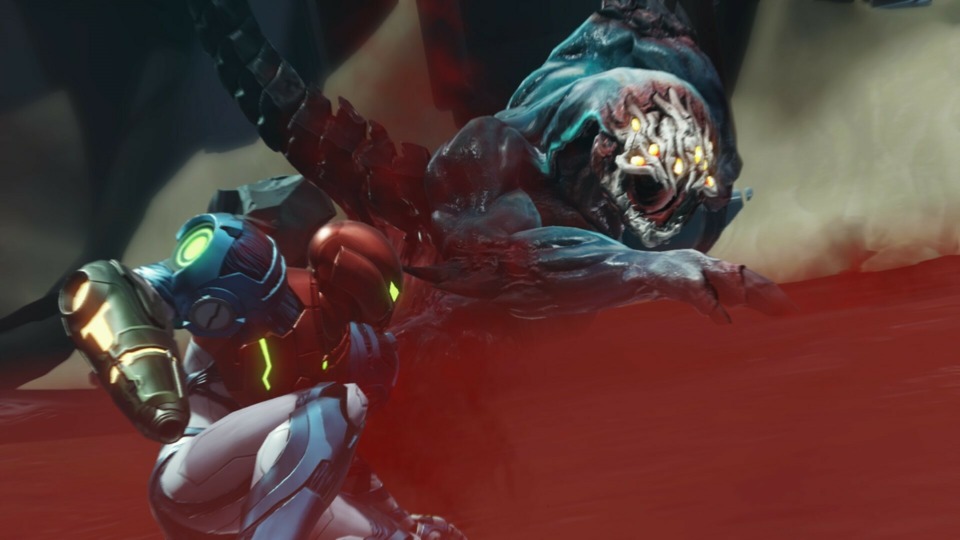Metroid Dread: The Goldilocks Zone
By jeremyf 5 Comments
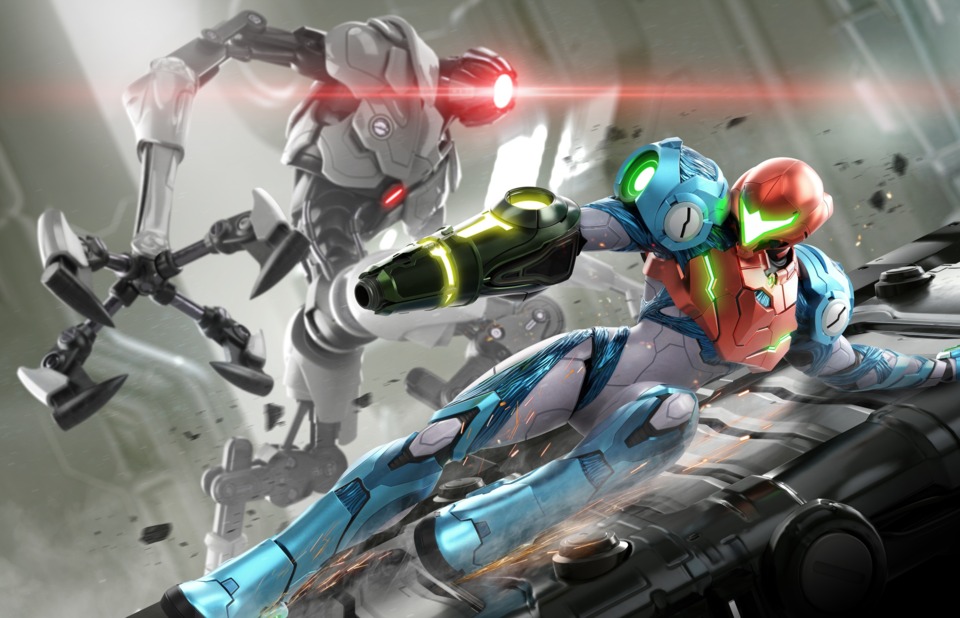
It’s rare that a long-awaited product meets expectations, but the final iteration of the languished Metroid Dread is here to great acclaim. While I haven’t heard from anyone who fully dislikes the game, I found it interesting which criticisms did pop up. One group of people thinks the game is overly difficult and leaves players to get lost without any help. Another group wishes Dread didn’t hold their hands so much and allowed them more freedom to explore. How can both realities exist simultaneously? Furthermore, how is it that I count myself in neither of these camps? By some miracle, Metroid Dread hits the exact sweet spot where I can enjoy its progression without hitting my head against the wall. It’s not too hot, not too cold – just right.
But it’s been a long journey to this point. We aren’t born enjoying this type of game. The search action genre (known by freaks as “metroidvanias,” known by one guy as “troidlikes”) is very popular among The Gamers. They are very happy to talk online about Super Metroid and Metroid Prime as some of the greatest things to ever grace the Earth. I, coming to these games late, had these expectations of life-changing epics. And while I gave it an honest effort, I just couldn’t get down with a lot of troidlikes.
To speak generally about things I didn’t like:
- I hated getting lost. These games often obfuscate where you are supposed to go next, and they just make you figure it out yourself. In older ones, especially, it comes to either luck or institutional knowledge from playing the game a bunch of times already. Which led to my opinion that:
- These games were not “nonlinear” at all. To me, a true nonlinear experience is Breath of The Wild – you are free to explore the world in any order. In most troidlikes, there is still a direct sequence of events you need to trigger to advance. That made the lauded openness feel like a lie to me.
- Your path forward is so often hidden behind “Metroid surprises,” by which I mean stuff like hidden blocks. That always felt more annoying than rewarding to uncover.
- I didn’t like how the character controlled, and finally:
- Dying and losing all progress from the last save point, which means re-exploring what I’ve just done.
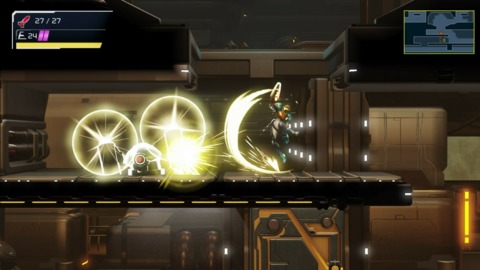
I could spend all day going over the pros and cons of various troidlikes I’ve played, but in short, I’ve grown to like them a lot more in the past year or two. Marathoning the four-game 2D Metroid series gave me a better appreciation for their progression, and games like Ori show how to advance the genre with their incredible movement. When Metroid Dread was announced for October, I was legitimately excited. With the finished game in hand, it’s undoubtably from the same DNA as its predecessors. However, it addresses my five complaints brilliantly, leading to an experience in the upper tier of modern troidlikes.
Dread starts in a damp cave – where else – and Samus has once again lost the majority of her abilities. But moving through the tutorial section, the upgrade to her speed is instantly apparent. I’ve never felt this level of control over Samus, who was previously floaty and unwieldly. Here, she’s snappy. Already, the developers have cleared one of my hurdles to enjoying a search action game. This movement would be fun no matter the genre. Returning from Mercury Steam’s previous project is Samus’s 360-degree aiming and melee counter. These make the combat as fine as the movement. Certainly, it’s better than the locked angles we dealt with before. With better control over your weaponry, enemy encounters can step up and become something great – but more on that later. The biggest new thing off the bat is a slide move. Since Samus’s abilities are so tied to trinkets scattered around the universe, it’s a little funny that she just decides she can slide now. That said, it’s a great move for preserving momentum and slipping into tight spaces.
With the basics out of the way, things quickly fall into a familiar rhythm. Explore the environment, destroy anything you can, and find upgrades. The pace of progression feels noticeably faster than in previous entries. It sometimes felt like I had barely any time making use of the latest ability before stumbling into something else. Dread asks you to master every tool you have by the game’s end, but some of them are less significant than they could be. Still, each new power contributes to the fantasy of the unstoppable bounty hunter quite well.
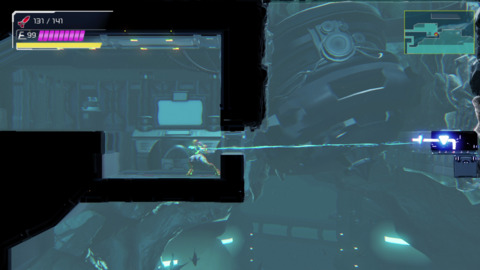
Most abilities have been seen before, but there are a handful of new concepts. They are often cool in theory, but ultimately situational. The exception to this is the phantom dash, which has a high level of utility in combat. But a dash move has been part of modern platform design for a good while now. Limited credit for that. Ultimately, a more intuitive control scheme could have been found for managing all these powers. Nearly every button on the controller is put to use, and in tense moments it’s very easy to panic and forget which inputs are required for certain maneuvers.
Exploring the alien planet, on the other hand, has never been more intuitive. The biggest contributing factor to this is the upgraded map. The days of abstracted squares are behind us; instead, the world is represented with its actual geometry. Every interactable object is labeled as soon as you find it, including doors, pickups, and even hidden blocks. This is such an improvement on how old troidlikes handled things. If you get a new door-opening ability, you can quickly check for that icon and start your way there. The game doesn’t have to put a waypoint to lead you by the nose, but it subtly lays out the path forward. The system is so robust that the option to add your own markers feels unnecessary.
That said, the map is doubly helpful because navigating without it would be a pain. I was unable to mentally map out the world like I could before. Certain rooms stick in my memory because I visited them multiple times, but generally the layouts of each area were in one eye and out the other. I couldn’t even tell you the themes of each area. What’s the difference between Dairon and Cataris and Gabagul? I couldn’t tell you offhand. It might be the quicker pace through the environments or the art direction, but that’s just how it is.
The pace of the exploration is controlled intelligently by limiting where Samus can go at any given point. You’ll be locked off from backtracking much of the time, all in the service of funneling you towards the next step of the journey. This is where the frustration comes for veterans who have played these games for 30 years. Personally, I think it’s brilliant. If you’re totally lost, you still know that there’s a limited area that hides the solution. Even when that solution is behind those stupid breakable blocks that are still around, at least you weren’t scouring the entire game world. They hit the exact right point for me to enjoy discovery without being overwhelmed.
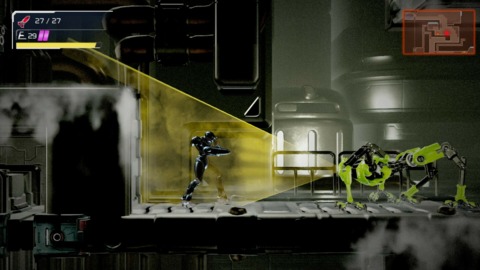
All of that applies to the standard Metroid portion of the game, but there is another portion that gives Dread its subtitle. When Samus arrives on the planet, there are seven EMMI robots causing trouble. These are too powerful to fight head-on, so going through their territory requires running and hiding. You should just run; hiding isn’t very fun or effective. These sections play more like timed obstacle courses. I suppose they test knowledge of platforming like boss fights test combat ability. The EMMI zones aren’t bad, but if the goal was to inspire Dread, they don’t succeed. The robots are not visually scary, and the animation for stabbing Samus reads more like swordplay at a community theater. So, the threat is limited. Despite the EMMIs’ supposed prominence, they won’t immediately come to mind when I think about Metroid Dread.
Where the game really shines, however, is with boss battles. Bosses have never been a series highlight until now, where they command focus and mastery. They have more in common with Cuphead than with any previous Metroid game. To win, you must zip around dodging every attack, because they hit hard. Bosses near the end can deal close to 300 damage with a single hit! I struggle to think of an enemy doing even 100 in a past game. After you see that game over screen, though, they drop Samus right outside the boss’s house. Finally, no more trekking through all that previously covered ground just for another chance at the fight! The near-instant retries make learning boss patterns gratifying. By the time you fell a boss, you will have practically done so while taking no damage. It’s difficult for sure, but never crosses the line into unfair. I wouldn’t have expected the bosses to be my favorite part of Metroid Dread, but, again, that’s just how it is.
Finally, the story presence is typically sparse in Dread. It’s limited to just a few larger cutscenes, but each feels monumental. As the final game in the Metroid timeline, there were a lot of story opportunities, and the writers take most of them. I was shocked how closely the plot follows my own expectations for what a Metroid 5 could be. I don’t think the best moments are even worth alluding to, so pick up the game and experience the nuttiness firsthand.
Troidlikes are dominant in a way they weren’t when the last Metroid game came out. I was doubtful that a new Metroid could live up to its progeny, but not only is Metroid Dread a reinvigoration of the franchise, it stands toe to toe with the best in the genre. I doubt that troidlikes will ever be my favorite genre. However, it’s games like Dread that show how wrong I was to dismiss them out of hand.
